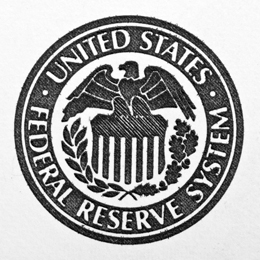 I’m going to take a chance—probably only a small one—and predict that the Federal Reserve will announce the end of its bond-buying program today.
I’m going to take a chance—probably only a small one—and predict that the Federal Reserve will announce the end of its bond-buying program today.
If I’m wrong, I won’t be the only one. Expectations for the Fed to step back are almost universal at this point.
Fed may be backing off, but not checking out
The Fed has pretty much allowed these expectations to lock in. If it doesn’t end bond buying—or even worse, steps it back up—markets would react badly, wondering what kind of problem the Fed sees. The Fed has far more to lose than to gain by not ending bond purchases, so everyone expects them to end.
Does that mean the end of stimulus or the Fed’s involvement in the economy? Hardly. Even if the Fed is no longer buying bonds, it remains committed to an indefinite period of lower rates. As long as the Fed keeps that commitment, the foot remains firmly on the economic accelerator.
When the Fed stops buying bonds, we won’t be back to normal; in fact, we won’t even be fully on the road to normal. At best, this will be the end of the beginning.
Where do we go from here?
In many ways, the strength of the economy suggests that the Fed should start to raise rates sooner rather than later. Previously, I’ve mentioned "before the end of the year" as a possibility, with next March being most probable. Markets don’t think so. According to the Wall Street Journal, the implied probability of a March increase has dropped to less than 1 percent, and even June odds are down to 11 percent.
Why the big drop? Two main reasons: market turbulence and risk elsewhere in the world. The Fed has long been committed to “looser for longer” to prevent any kind of pullback in the U.S. economy, and both of these factors could lead to just that. It makes sense, from the Fed’s perspective, to stay loose just in case.
Remember, though, that these probabilities are based on what the market thinks, not what the Fed itself is planning. The committee has said all along that any decision on rates would depend on the data, not the calendar. The problem with the market’s expectations is that they’re considerably less aggressive than the Fed’s actual projections, as shown in the “dot plot.”
Disconnect between market and Fed: a ticking time bomb
Markets have been very sensitive to what the Fed is doing (and is expected to do). When the Fed does start to tighten, the larger the gap between the market and reality, the worse the adjustment will be.
Right now, that gap is quite large, so even if the Fed does as expected today, keep an eye on future meetings. The consequences could be much greater than most people think.


 Print
Print

